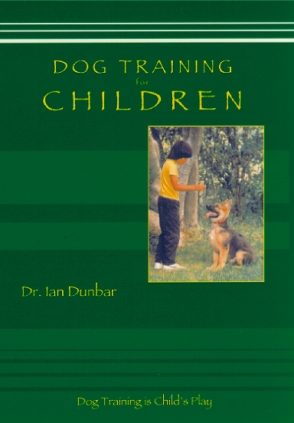When you get a new puppy, you need to meet six developmental deadlines before your puppy is just five months old. Know what they are BEFORE you get your puppy!
Why Purchase a Puppy that is NOT Housetrained?

I’ve raised a few puppies in my time and it has always puzzled me why anyone would want to purchase a puppy that hasn’t already been housetrained, especially since house soiling and other behavior problems, such as excessive barking and destructive chewing, are a major source of frustration for new owners. Most kennel-bred puppies are allowed to eliminate anywhere and everywhere, chew anything and everything, bark at will and run around uncontrolled, which of course, is exactly what they’ll do in their new homes. Consequently, far too many eight-week-old puppies already have behavior unsuitable to a home environment and new puppy owners are behind before they start. As the behavior problems blossom during adolescence, many dogs are surrendered to shelters. Unbelievably, predictable and preventable behavior and training problems are the #1 terminal illness for domestic dogs.
And so, why do people buy unhousetrained puppies? I think because most prospective owners are simply unaware that they have a choice: Either they may purchase puppies that are housetrained, chewtoy-trained and know some basic manners — at the very least, come here, sit, lie down, stand and roll over, or, they may buy puppies that eliminate anywhere, chew everything and are unruly and hyperactive.
Certainly some breeders do spend a lot of time training their puppies. But most don’t. Why not? I think because few breeders realize how easy it is to housetrain puppies and that it actually saves time. Similarly, chewtoy-training and teaching basic manners and tricks are as easy as they are enjoyable.
The existing state of affairs remind me of when Kelly and I started to implement the Open Paw Shelter Behavior Program (www.openpaw.org) at our local shelter in Berkeley. Our first suggestion was that we should housetrain all the kennel dogs and especially make sure that incoming housetrained dogs were not forced to soil their living quarters and thus, make them less adoptable. Surprisingly, we met with a lot of resistance. The major objections from management and staff were that they had neither the personnel nor the time. We asked how kennel workers allocated their time and of course, a huge amount of each day was spent cleaning up urine and feces from the kennels that housed unhousetrained dogs. Kelly, Colleen and Sharon recruited a handful of volunteers and some became “housetraining specialists”, who only dropped by the shelter for 15-20 minutes on their way to work, during lunch hour, on their way home from work, or later in the evening. Thus, all kennel dogs got at least three trips to the toilet each day. Now the dogs were less stressed, kennels were clean, and shelter staff and volunteers had time to devote their time to training the dogs and cats so that they presented well to potential adopters.
I fondly remember one evening in particular. Kelly and I were the only volunteers on the Saturday evening shift and we de-peed and de-pooped all the dogs in the kennel. Kelly would bring me a dog and I would stand next to the doggy toilet (with its artificial grass and fire hydrant) while praising and rewarding each eliminator with three liver treats. Then Kelly would bring me more dogs and return the empty ones to their kennels with a stuffed Kong for the night. It only took us an hour or so to empty the entire kennel and tuck them into bed for the night.
Educating Prospective and New Puppy Owners
Prospective owners need to know that they have a choice when purchasing a puppy and that regardless of what happened, or didn’t happen, in the breeding kennel, preventing predictable behavior problems is the most urgent item on a puppy’s educational agenda — starting the very first day the puppy comes home. Most new puppy owners have no idea of the urgency of preventing behavior problems, or how to do it. Consequently, pet professionals (breeders, pet product retailers, veterinarians, trainers and shelter/rescue organizations) need to tell them. Start community-based new puppy-owner education programs to inform what needs to be done — a monthly video evening with a Q&A session afterwards. A puppy’s future adult behavior is pretty much determined during the first three months. To paraphrase William Wordsworth: The Pup is Parent of the Dog.
Good habits must be taught from the outset —where to eliminate, what to chew, when and for how long to bark and how to enjoy time spent at home alone, otherwise, puppies, will develop bad habits.
Certainly it’s possible to retrain a dog with bad habits but the process becomes harder the longer the pup has indulged in the bad habits. As habits form, a feedback loop develops between the sensorimotor cortex and the striatum and then fueled by dopamine from the midbrain, the infralimbic cortex helps imprint the habit in the striatum as a semi-permanent, single-unit activity in the brain. This is why habits are so hard to break. Essentially, the habit becomes a “mindless”, automatic and self-reinforced activity. So the question is: Would you rather your puppy pee and poop anywhere and everywhere without thinking about it, or would you prefer your puppy to eliminate in an appropriate toilet area as a matter of habit? As Kelly frequently points out, Good habits are just as hard to break as bad habits.
From my research at UC Berkeley in the 70s, it became obvious that given the opportunity, puppies start to housetrain themselves as early as three and a half to four weeks of age and will waddle away from their sleeping area to eliminate. It would be smart to stack the deck and allow puppies to housetrain themselves naturally.
Natural Housetraining
When you are not at home for longer than an hour or two, very young puppies need to be housed in a confinement area that is three times as long as it is wide, with a bed at one end and a toilet at the other. An ExPen in a corner of a room is ideal, or you may use a bathroom or utility room. (This arrangement works magic for single pups, or for an entire litter. Puppies will naturally start to use the toilet of their own volition because they have strong natural preferences about where they would like to eliminate. Puppies much prefer to eliminate as far away from their sleeping area as possible and in areas where they smell urine. Adults dogs prefer to eliminate on the same type of substrate that they used when growing up. So, use a square of turf for the toilet (or, maybe a concrete slab if you live in Manhattan, or a tray of ice if you live in Minnesota). Change the turf just once a week (to preserve the smell of urine) but clean up the feces as close to as it is produced as possible. Dogs do not like to defecate close to days-old feces.
When you are at home, confine your puppy to a short-term confinement area, such as a dog crate with only a bed and a stuffed Kong inside. Should your puppy chew her bed, just once, remove the bed. (You don’t want your puppy developing a destructive chewing habit.) Confine your pup to the crate with just a stuffed Kong. Every hour on the hour take your puppy to her toilet, praise her hugely when she eliminates and play with her for a bit (5 to 20 minutes) then put her back in the crate for another hour.
When returning your puppy to the crate, always give her a stuffed Kong. To teach your puppy to enjoy confinement in the crate, put the stuffed Kong in the crate, close the crate door and allow the puppy to reflect on the situation for a while. Wait until your puppy begs you to open the crate door and then let your puppy inside to settle down with her Kong.
Chewtoy-Training
Early chewtoy-training is similarly urgent and important because it prevents adolescent destructive chewing, excessive barking, hyperactivity and separation anxiety. Feed puppies only from hollow chewtoys, such as Kongs, Kong Biscuit Balls and Premier Squirrel Dudes or similar items. Feeding from chewtoys teaches puppies to eat slower and allows a more even distribution of food to individual puppies in a litter. Moreover, each piece of food extricated from the chewtoys rewards your puppy for chewing the chewtoy, for lying down and for being quiet. Also, once puppies become Kongaholics and are accustomed to eating slowly in confinement, they now have a hobby to help them wile away the inevitable hours that they are likely to be left alone at home as adults, i.e., you’ll likely prevent adolescent-onset home destruction and perhaps even separation anxiety.
Errorless Housetraining
Follow these instructions to the letter and you’ll housetrain your puppy without a single mistake, plus you’ll teach your puppy to eliminate on cue.
The purpose of long-term confinement when you are not at home is: 1. To prevent mistakes around the house; 2. To maximize the likelihood your puppy will naturally housetrain herself and 3. To maximize the likelihood that your pup will become a Kongaholic, i.e., Kong-chewing becomes a semi-permanent brain activity aided and abetted by glorious dopamine.
The purpose of short-term confinement when you are home is: 1. To prevent mistakes around the house when you cannot supervise your puppy every moment; 2. To maximize the likelihood that you puppy will chew her Kong because there’s nothing else to chew in the crate and the Kong is stuffed with food; and 3. To be able to predict when your puppy needs to eliminate so that you may teach her to eliminate on cue.
Training is as easy as 1-2-3-4. Open the crate door, put your pup on leash and run her to the toilet area and then stand still and
1. Say, “Let’s go pee and poop”,
2. Wait
3. When your puppy eliminates
4. Immediately praise ultra-mega-enthusiastically like your pup has just come top of the class and then, give her three food rewards in succession.
Most of the necessary information for breeders and owners to raise well-behaved puppies is available for free download from www.siriuspup.com in the form of two of my books — BEFORE You Get Your Puppy and AFTER You Get Your Puppy. Additionally, Kelly and I have started a new Puppy Blog at siriuspup.com. Whereas the DogStarDaily blog is intended primarily for dog professionals, the Sirius blog has a How To… format and is written specifically for new puppy owners and provides really simple answers to their common questions and concerns.
To facilitate the process of prospective owners locating puppies that are housetrained trained, chewtoy-trained and have been taught some basic manners, SIRIUS® Puppy Training is compiling a US database for breeders who are taking the time to raise their litters according to the SIRIUS® Minimal Mental Health Guidelines for Puppies. This is an opt-in program and any interested breeders should contact [email protected]
For a translation into Portuguese of this article, please click here.










